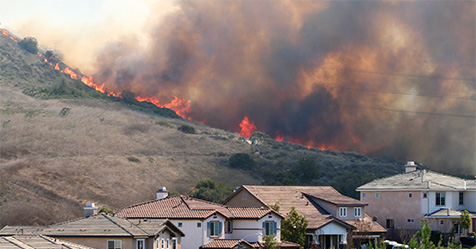As cleaning professionals and facility managers, you have heard many “new” terms associated with COVID-19 and your line of work, particularly when it comes to “effective cleaning.”
It’s important to understand the changing terminology in your industry and how to use it correctly. This understanding also helps you explain with confidence the cleaning services you are providing to your customers and building users.
This glossary includes cleaning-related terms that have become part of our job vocabulary during the pandemic. Keep it handy and be in the know next time you hear someone say, “that’s hygiene theater.”
ATP: All living cells contain adenosine triphosphate (ATP). ATP can indicate that bacteria, germs, proteins, viruses, or something entirely benign is on a surface. However, when it comes to effective cleaning, a considerable amount of ATP found on a surface should be interpreted as a red flag that more effective cleaning is necessary.
ATP zones: Effective use of ATP testing requires that several sections—or zones—of the same surface are tested to provide a more complete picture of whether a surface is potentially contaminated or safe. It will also help determine if more effective cleaning is necessary. For instance, if an ATP test on Zone 1 proves positive for ATP, but Zone 2 right next to it does not, the assumption cleaning professionals must make is that both Zone 1 and Zone 2 need thorough cleaning to protect human health. Bottom line: Test for ATP on multiple surfaces.
Antibacterial resistance: Some forms of bacteria found on surfaces can become resistant to the disinfectants traditionally used to eradicate them. This is similar to antibiotic resistance in which many forms of bacteria have become immune to those antibiotics that have traditionally resolved infections.
Electrostatic sprayers: Although not new technology, use of electrostatic sprayers increased during the pandemic. Electrostatic sprayers work by charging antimicrobial liquid as it passes through the nozzle. The positively charged antimicrobial droplets are attracted to negatively charged environmental surfaces allowing for improved coverage on hard, non-porous environmental surfaces.
Deep cleaning: A non–scientific term often used for marketing purposes, deep cleaning typically means cleaning that goes beyond traditional cleaning and that is perceived to be more thorough—involves greater agitation of surfaces (a key component of all cleaning), uses stronger cleaning solutions, and uses disinfectants as appropriate. Further, deep cleaning is often performed on weekends when facilities are unoccupied.
Environmentally preferable cleaning: Environmentally preferable cleaning is the same as traditional cleaning. However, it uses tools, cleaning solutions, and equipment all proven to have a reduced impact on the user and the environment when compared to traditional products used for the same or similar purpose.
Effective cleaning: Effective cleaning is the use of cleaning solutions, tools, and systems—green or traditional—proven to safely eliminate soils from surfaces. The process helps protect human health by minimizing the transmission of disease.
Hygiene theater: A term introduced by Derek Thompson in the July 2020 issue of The Atlantic, hygiene theater is the practice of giving the illusion of effective cleaning. During the pandemic, some organizations practiced hygiene theater in an effort to address the health and safety concerns of building users. This often resulted in indiscriminate disinfecting (mentioned next). However, hygiene theater does not necessarily protect human health.
Indiscriminate disinfecting: Many cleaning professionals have been using more disinfectants in more places than needed. Referred to as indiscriminate disinfecting, this is not part of an effective cleaning program. Further, there is typically no disinfecting strategy involved in the process. The result is that much of the disinfecting is unnecessary, unhealthy, and costly.
Kill claims: Every disinfectant marketed in the U.S. will have “kill claims” on the label, indicating which pathogens the disinfectant is designed to kill or eliminate.
List N: Also known as N-List, this is a list of disinfectants evaluated by the U.S. Environmental Protection Agency (EPA) and proven to be effective against the coronavirus. Use a List N disinfectant in an effective cleaning program if COVID-19 is a concern.
Safety First: The U.S. Green Building Council’s (USGBC) LEED program is beta-testing a new program that will eventually contribute to LEED certification. The new credit, called Safety First: Cleaning and Disinfecting Your Space, is all about effective cleaning. The program helps address the need for effective cleaning while also protecting the health of the user and the environment. A vital part of the pilot credit is to scientifically test surfaces to evaluate cleaning effectiveness using the ATP systems mentioned earlier.
UV-C: Ultraviolet light in the “C” spectrum is light that can be produced electronically. When applied to surfaces or used in air purifiers, it disrupts the DNA and cell functions of microorganisms, making this an effective way to eliminate (kill) bacteria, germs, and pathogens.
UVGI: According to the U.S. Centers for Disease Control and Prevention (CDC), ultraviolet germicidal irradiation (UVGI) is “the use of ultraviolet (UV) energy to kill viral, bacterial, and fungal organisms.” It’s an older technology that has received renewed interest due to COVID-19. When used with an air purifier, UVGI can add another layer of protection to help eliminate impurities in indoor air.




